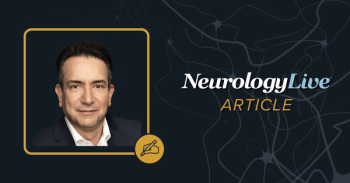
Midazolam for Status Epilepticus Underutilized in EMS Setting Despite High Efficacy
Notably, no patients received a dose and route consistent with national guidelines.
A cross-sectional analysis examining the use of midazolam (Nayzilam; UCB) by an emergency medical services (EMS) agency for treatment of adults with status epilepticus showed a significant deviation from evidence-based benzodiazepine use, contributing to the need for rescue therapy and respiratory support.1
In total, 2494 cases of status epilepticus in adults were included in the analysis, with 1537 patients given midazolam at any dose (39.4% given 5 mg or more), yielding an administration rate of 62%.
Led by Elan L. Guterman, MD, neurologist, University of California San Francisco, the data showed that undertreatment with midazolam was associated with an increased need for rescue therapy, with 282 (18%) patients needing a second dose.
Those who received rescue therapy were less likely to have received an initial midazolam dose of 5 mg or more, were more frequently tachycardic, had lower Glasgow Coma Scale (GCS) scores, and were evaluated by providers who had seen a higher number of patients with status epilepticus during the study period.
National guidelines state that first-line, evidence-based treatment with midazolam requires administering the medication intramuscularly as a single 10-mg dose, and does not recommend the intranasal, intravenous, or intraosseous route of administration. Notably, no patients included in the study received the guideline-based dose of 10 mg; only 5 patients actually received a dose greater than 5 mg. Intranasal and intravenous injection accounted for 47% and 38.3% of midazolam administration, followed by intramuscular (13.7%) and intraosseous (1%).
Guterman and colleagues wrote that “this finding identifies an important gap in the treatment of status epilepticus and carries important clinical implications if EMS agencies nationally parallel this single site experience. The next challenge will be evaluating the true scope of the problem and identifying effective interventions to correct it.”
Higher midazolam doses were associated with lower odds of needing rescue therapy (odds ratio [OR], 0.8; 95% CI, 0.7–0.9) and were not associated with increased respiratory support, the primary and secondary end point of the study, respectively. In fact, higher doses of midazolam were associated with decreased need for respiratory support after adjustment (OR, 0.9; 95% CI, 0.8–1.0). Notably, receiving a midazolam dose of 5 mg or more was associated with lower odds of needing respiratory support (OR, 0.8; 95% CI, 0.7–1.0).
Respiratory support was ultimately required by 678 of the 1537 (44.1%) patients who received any dose of midazolam, with 517 (33.6%) patients requiring ventilatory support. Those who required respiratory support were more likely to be male, have comorbid alcohol and drug use, were tachycardic, had lower oxygen saturation, had lower GCS scores, and were evaluated by providers who had seen a higher number of total seizure and status epilepticus patients during the study period.
Univariate and multiple logistic regression analysis showed that patients with epilepsy (OR, 1.4; 95% CI, 1.2–1.7) and with a lower GCS score (GCS 8–12: OR, 0.7; 95% CI, 0.5–0.9; GCS 13–15: OR, 0.3; 95% CI 0.2–0.3) were more likely to receive midazolam.
In May 2019, midazolam become the
The benzodiazepine, which may be administered in the outpatient setting by a non-healthcare professional in patients actively seizing and where a seizure cluster occurs, is supplied as 2 single-use nasal spray units, each containing a 5-mg dose of midazolam in 0.1-mL solution.
REFERENCES
1. Guterman EL, Sanford JK, Betjemann JP, et al. Prehospital midazolam use and outcomes among patients with out-of-hospital status epilepticus. Neurology. Published online September 17, 2020. doi: 10.1212/WNL.0000000000010913
2. UCB announces NAYZILAM® (midazolam) nasal spray now approved by FDA to treat intermittent, stereotypic episodes of frequent seizure activity in people living with epilepsy in the U.S. News release. UCB. May 20, 2019. Accessed September 23, 2020. https://ucb.com/stories-media/Press-Releases/article/UCB-announces-NAYZILAM-midazolam-nasal-spray-now-approved-by-FDA-to-treat-intermittent-stereotypic-episodes-of-frequent-seizure-activity-in-people-living-with-epilepsy-in-the-U-S
Newsletter
Keep your finger on the pulse of neurology—subscribe to NeurologyLive for expert interviews, new data, and breakthrough treatment updates.



























